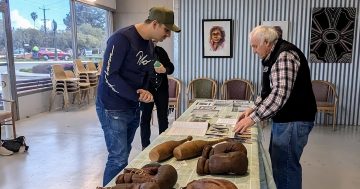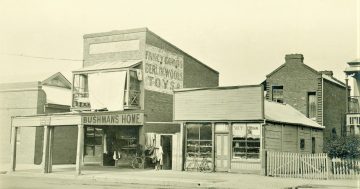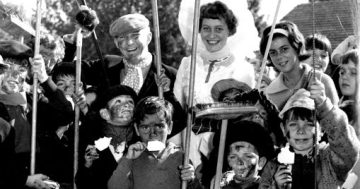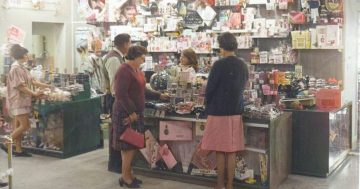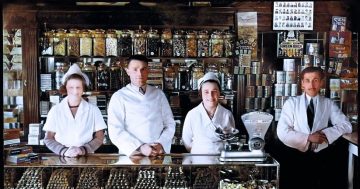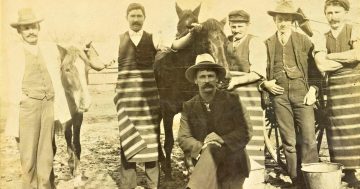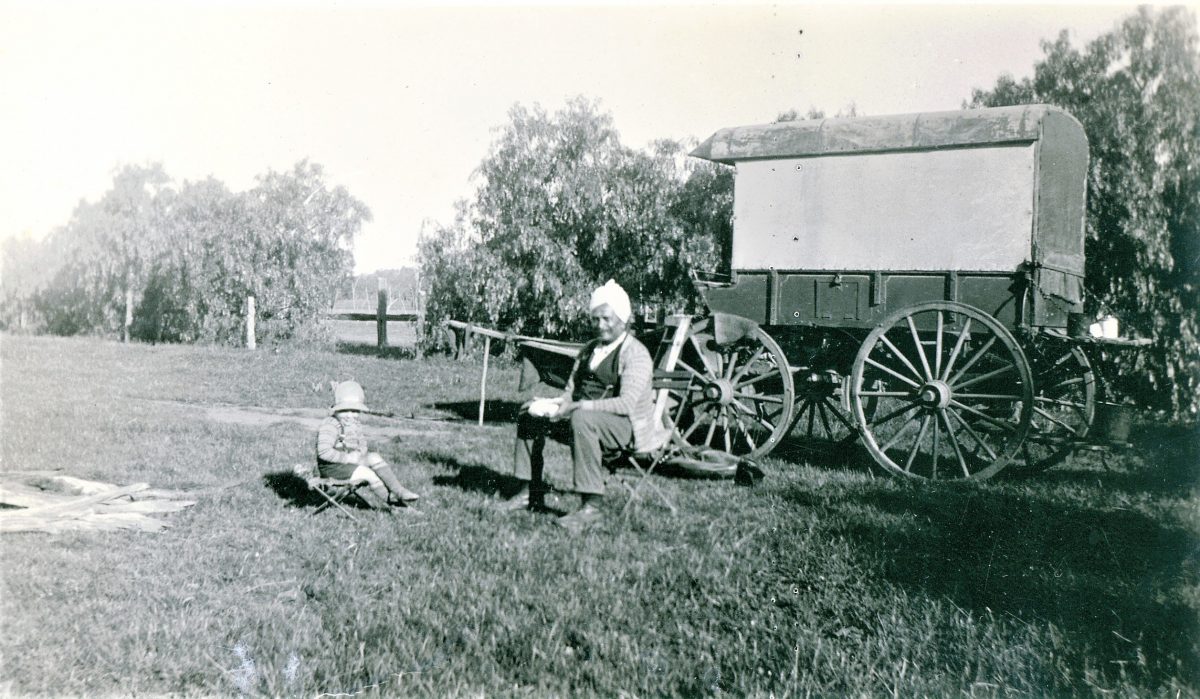
Neville Grinter and Sunda Singh, 1936. Photo: Museum of the Riverina (Reynolds collection).
This week, the team from the Museum of the Riverina take us back to 1936, just a few years prior to the outbreak of World War II.
Here, we find little Neville Grinter sitting companionably with the Indian hawker, Sunda Singh, on the Grinter family property ‘Drayton Park’, near Lockhart.
Neville was the son of Arthur and Hilda Grinter (née Guttler), who had settled in Lockhart following their Wagga wedding in 1932.
Hawkers were an important part of Australian country life, being a lifeline between the city and rural settlements.
During the 1800s, there were an estimated 2000 to 3000 hawkers in Australia – many of them Europeans.
Later, British Indian hawkers (mostly Punjabis) took over the role of intermediary salesmen to the isolated farms by delivering supplies.
Before Federation in 1901, these British Indian subjects could move freely into Australia.
They brought with them vans jam packed with necessities and novelties. Goods usually included clothing (jackets, flannel shirts, singlets, socks, night dresses), boots, flour, butter, sugar, oil, baking powder, combs, scissors, shaving requisites, talcum powder, toilet soap, perfumes, necklaces and medicines.
Indian hawkers were a common sight on farms throughout the 1930s. In addition to the necessary goods they brought, they also carried a variety of tiny things that the housewife really depended on – tiny things that were so unimportant to other people, like needles and cotton, darning wool and scraps of material to make children’s clothes.
They also entranced children with their storytelling, enthralling them with tales of faraway places.
Some of the hawkers were able to spin sugar like fairy floss, and often brought small gifts for the children living on remote stations.
Sadly, we know nothing about Sunda Singh except for his name, yet his spirit lives on through this wonderfully evocative snapshot.
Image and information provided by Michelle Maddison, curator at the Museum of the Riverina.







